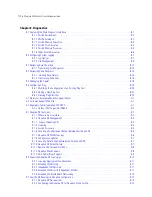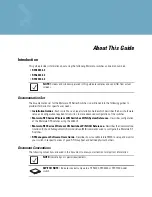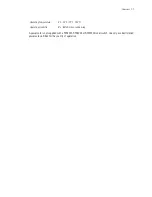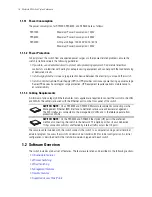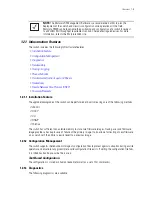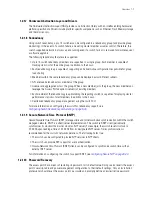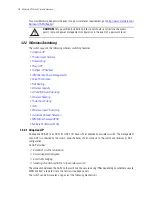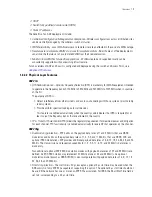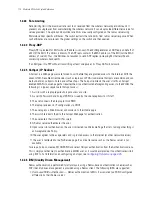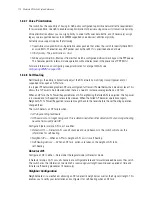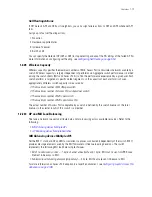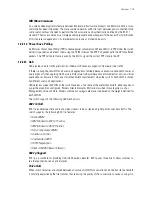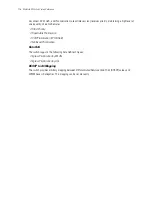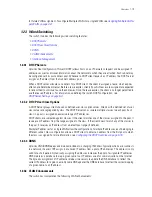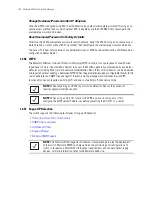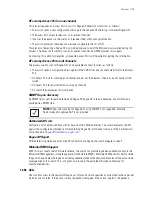
1-10
Motorola RF Switch Systen Reference
1.2.2.3 Rate Limiting
Rate Limiting limits the maximum rate sent to or received from the wireless network per mobile unit. It
prevents any single user from overwhelming the wireless network. It can also provide differential service for
service providers. The uplink and downlink rate limits are usually configured on the radius server using
Motorola vendor specific attributes. The switch extracts the rate limits from radius server response. When
such attributes are not present, the global settings on the switch are then applied.
1.2.2.4 Proxy-ARP
Proxy ARP is provided for MU's whose IP address is known. The WLAN generates an ARP reply on behalf of
a MU (if the MU's IP address is known). The ARP reply contains the MAC address of the MU (not the MAC
address of switch). Thus, the MU does not awaken to send ARP replies (increasing MU battery life and
conserving wireless bandwidth).
If an MU goes into PSP without transmitting at least one packet, its Proxy ARP will not work.
1.2.2.5 HotSpot / IP Redirect
A hotspot is a Web page users are forced to visit before they are granted access to the Internet. With the
advent of Wi-Fi enabled client devices (such as laptops and PDAs) commercial hotspots are common and can
be found at many airports, hotels and coffee shops. The hotspot re-directs the user’s traffic on hotspot
enabled WLANs to a web page that requires them to authenticate before granting access to the WLAN. The
following is a typical sequence for hotspot access:
1. A visitor with a laptop requires hotspot access at a site.
2. A user ID/ Password and hotspot ESSID is issued by the site receptionist or IT staff.
3. The user connects their laptop to this ESSID.
4. The laptop receives its IP configuration via DHCP.
5. The user opens a Web browser and connects to their home page.
6. The switch re-directs them to the hotspot Web page for authentication.
7. The user enters their User ID/ Password.
8. A Radius server authenticates the user.
9. Upon successful authentication, the user is directed to a Welcome Page that lists (among other things)
an Acceptable Use Policy.
10.The user agrees to the usage terms and is granted access to the Internet (or other network services).
11.The user is redirected to the No Service page if a critical resource such as the Radius server is not
available.
To setup a hotspot, create a WLAN ESSID and select Hotspot authentication from the Authentication menu.
This is simply another way to authenticate a WLAN user, as it would be impractical to authenticate visitors
using 802.1x. For information on configuring a hotspot, see
Configuring Hotspots on page 4-35
.
1.2.2.6 IDM (Identity Driven Management)
Radius authentication is performed for all protocols using a Radius-based authentication scheme (such as
EAP). Identity driven management is provided using a Radius client. The following IDMs are supported:
•
User based SSID authentication
— Denies authentication to MUs if associated to a ESSID configured
differently by their Radius server.
Содержание RFS Series
Страница 1: ...M Motorola RFS Series Wireless LAN Switches WiNG System Reference Guide ...
Страница 10: ...TOC 8 Motorola RF Switch System Reference Guide ...
Страница 56: ...2 8 Motorola RF Switch System Reference ...
Страница 334: ...5 52 Motorola RF Switch System Reference 2 Select the MU Status tab ...
Страница 510: ...7 32 Motorola RF Switch System Reference Guide ...
Страница 534: ...8 24 Motorola RF Switch System Reference Guide ...
Страница 570: ...C 14 Motorola RF Switch System Reference Guide ...
Страница 589: ......
Страница 590: ...MOTOROLA INC 1303 E ALGONQUIN ROAD SCHAUMBURG IL 60196 http www motorola com 72E 132942 01 Revision C December 2010 ...

